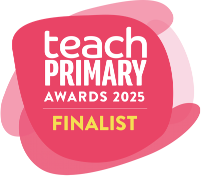
Money and coins in Year 1
Working with coins in practical contexts is both an effective way to become confident with money, but also helps with addition and subtraction. One of the best resources in a classroom or at home is a collection of real coins or plastic coins.
At the beginning of Year 1 children should be given the opportunity to sort coins by size and shape.
Plenty of opportunity should be given to count, using 1p and 2p pieces, both counting up and down. They can then compare two amounts of money by matching the coins and then say who has more or less.
We have a great range of worksheets to help children, encouraging hands on experience with coins. A mix of coins can be introduced when children are confident of their value and introducing simple shopping exercises, with items costing small amounts, can be carried out from early on. At first this should be a straight exchange. Later change can be introduced. Small boxes wrapped in paper with price tags are a popular resource with children. Encourage counting on when working out change.
Later 5p and 10p coins can be introduced and coins can be exchanged up to 10p, together with giving change.
Unfortunately most things in the real world cost pounds rather than pence but to cover this we have a superb, colourful set of notes which can be cut out and used to help with counting in steps of 5, 10 20 and 50 as well as with our worksheets using whole pounds .
Our very latest sets of worksheets look at ‘how much more?’ using coins. Again, children can match the coins shown on the pages and add to them to make the totals.
With over 120 pages just on money in Year 1 why not take a peep?
Go to Money and coins in Year 1
 Money and coins in Year 1
Working with coins in practical contexts is both an effective way to become confident with money, but also helps with addition and subtraction. One of the best resources in a classroom or at home is a collection of real coins or plastic coins.
At the beginning of Year 1 children should be given the opportunity to sort coins by size and shape.
Plenty of opportunity should be given to count, using 1p and 2p pieces, both counting up and down. They can then compare two amounts of money by matching the coins and then say who has more or less.
We have a great range of worksheets to help children, encouraging hands on experience with coins. A mix of coins can be introduced when children are confident of their value and introducing simple shopping exercises, with items costing small amounts, can be carried out from early on. At first this should be a straight exchange. Later change can be introduced. Small boxes wrapped in paper with price tags are a popular resource with children. Encourage counting on when working out change.
Later 5p and 10p coins can be introduced and coins can be exchanged up to 10p, together with giving change.
Unfortunately most things in the real world cost pounds rather than pence but to cover this we have a superb, colourful set of notes which can be cut out and used to help with counting in steps of 5, 10 20 and 50 as well as with our worksheets using whole pounds .
Our very latest sets of worksheets look at ‘how much more?’ using coins. Again, children can match the coins shown on the pages and add to them to make the totals.
With over 120 pages just on money in Year 1 why not take a peep?
Go to Money and coins in Year 1
Money and coins in Year 1
Working with coins in practical contexts is both an effective way to become confident with money, but also helps with addition and subtraction. One of the best resources in a classroom or at home is a collection of real coins or plastic coins.
At the beginning of Year 1 children should be given the opportunity to sort coins by size and shape.
Plenty of opportunity should be given to count, using 1p and 2p pieces, both counting up and down. They can then compare two amounts of money by matching the coins and then say who has more or less.
We have a great range of worksheets to help children, encouraging hands on experience with coins. A mix of coins can be introduced when children are confident of their value and introducing simple shopping exercises, with items costing small amounts, can be carried out from early on. At first this should be a straight exchange. Later change can be introduced. Small boxes wrapped in paper with price tags are a popular resource with children. Encourage counting on when working out change.
Later 5p and 10p coins can be introduced and coins can be exchanged up to 10p, together with giving change.
Unfortunately most things in the real world cost pounds rather than pence but to cover this we have a superb, colourful set of notes which can be cut out and used to help with counting in steps of 5, 10 20 and 50 as well as with our worksheets using whole pounds .
Our very latest sets of worksheets look at ‘how much more?’ using coins. Again, children can match the coins shown on the pages and add to them to make the totals.
With over 120 pages just on money in Year 1 why not take a peep?
Go to Money and coins in Year 1
